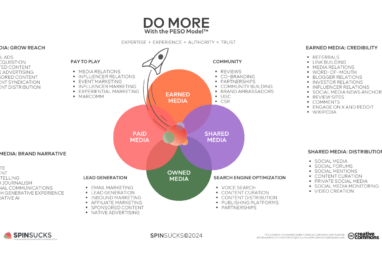Why trust in our causes can no longer be assumed
About the author
David Owen is Communications and Marketing Manager at the Money Advice Trust, the charity that runs National Debtline and Business Debtline. This article was written in a personal capacity as part of a CIPR Professional PR Diploma assignment.

As the public’s perception of charities changes we need to re-assess how we communicate our impact
“Charities no more trusted by British public than ‘stranger in the street’”. “Britons now trust hairdressers more than charities”. On first glance, both headlines make for sombre reading for the charitable sector. Scandals from Oxfam workers paying Haiti earthquake survivors for sex, to claims of excessive executive pay and aggressive, invasive and in some cases exploitative fundraising methods have rocked the public’s trust in the sector.
But is there anything we can learn from these headlines? Do they actually damage trust in charities? And if they do, how do we go about repairing it?

Benchmarking trust in charities against that of hairdressers may make for a good headline but is there anything useful to take from such a comparison? When you visit the hairdresser, trust is important. With someone standing over you with a sharp implement in hand you need trust in their ability to handle the scissors. Crucially you want their work to result in a good outcome, a nice haircut.
To take this comparison one step further, a decision to visit a particular hairdresser is likely to be influenced by factors such as: past experience, a recommendation from a friend or someone you trust, or perhaps price. Hairdressing may seem a world away from charities, but some of these considerations are relevant to charities as well.
The Charity Commission’s 2018 report shows that while levels of trust in charities remain at similar levels to 2016, controversies surrounding Age UK, Kids Company and Oxfam have taken their toll.
While one bad experience may put you off one hairdresser, these controversies impact the sector as a whole. And when we talk of a ‘charitable sector’ we are really talking about 168,000 hugely diverse organisations that vary greatly in size, scale and activity. Yet, for the public, when asked what type of organisation comes to mind when they think of ‘charities’ it is the largest charities, such as Oxfam, that they imagine. So when The Times broke the story: ‘Top Oxfam staff paid Haiti survivors for sex’ back in 2017, all charities were affected.
One of the reasons why the reaction to this story was so strong was because it showed a charity demonstrating the exact opposite characteristics to what the public thought they represented. Not sharing the reasons why staff in Haiti were dismissed in 2011 implied, to the public, an organisation trying to cover-up wrongdoing and protect itself rather than the victims. This lack of transparency and accountability meant that seven years on when the story broke, the attempts at an explanation fell on deaf ears. The public was not prepared to listen. As then Oxfam chief executive Mark Goldring said, every response just “failed in the court of public opinion”.
Despite the impact of this scandal, according to the Charity Commission’s findings on trust, compared against other sectors, charities perform well and are still more trusted than private companies, banks and politicians. But is it enough to be trusted more than a private company? When your aims go beyond “making money or gaining power” as Baroness Stowell, Chair of the Charity Commission describes, expectations on you are rightly higher. When a scandal hits, the gap between what is expected of you as a charity and how you are actually perceived grows. Stowell goes further by saying, unlike when a controversy hits a supermarket, people still buy groceries. When a charity’s purpose is undermined through misconduct or other failures “your very existence comes into question.” We are not just talking about a drop-off in donations, but something deeper and more fundamental.
Findings published last year from the inquiry into the future of Civil Society echoed the importance of trust: “[it] is the most important asset we have – even more important than money, it is an essential foundation for everything we do”.
A controversy such as the Oxfam example grows the feeling of separation between a charity and the public because of the distance between how they should act and the perceived reality.
Trust is changing
But can we lay blame solely at the front doors of those charities implicated in recent scandals?
While scandals have clearly played a role in shifting public faith, there are also wider issues at play. In society more generally, trust is changing. “The last decade has seen a loss of faith in traditional authority figures and institutions,” according to Richard Edelman, CEO of Edelman who run annual research into trust globally. A large part of this is driven by a “growing feeling of pessimism” about the future and a belief amongst people that the system is not working for them. Interestingly, whilst NGOs are found to be one of the most trusted organisations in the study, “my employer” emerges as the most trusted, suggesting people trust what is familiar and feels closer to them.
In addition, the report shows a massive rise in UK news engagement. This implies a desire amongst the public to better understand issues and to question previously held beliefs, particularly in institutions.
A desire for information presents a chance for charities to build on this thirst for knowledge, to re-assess the way in which we communicate and to meet the expectations of a public that is now more questioning of institutions than in the past. However, to tap into this some perceptions about the public within the sector may require change. NPC in their Charities Taking Charge report highlights a feeling amongst some charities that it is ”the public that need to better understand charities, rather than charities need to change their ways.”
As the Oxfam scandal showed, there is no room for complacency and trust cannot be assumed. Transparency and accountability to the public are two crucial building blocks for trust. In the example of Oxfam, the withholding of information was a major issue. In crisis situations the role of communications comes to the fore. But there is a fundamental ethical dilemma, particularly for communication teams between an organisational wish to stem negative publicity but also to be transparent and accountable. As professor of PR Jacquie L’Etang, explains in an article for the Journal of Communication Management, “withholding information clearly infringes the public interest”. She goes further by saying that the “ethics of public relations are to a large part governed by its paymasters.” Etang’s point here is an important one. Accountability to the public is crucial, but it is the responsibility of not just the communications team. There needs to be buy-in at a senior leadership level as well.
Although the Oxfam example is one of a charity in crisis management mode, it does show the impact of the media to influence public opinion. Even before the Oxfam scandal, the 2016 Charity Commission research into trust reported, a perceived lack of transparency and accountability, alongside negative media stories, as the biggest drivers of the trust deficit.
Aside from stories about scandals, it could be argued that public discontent, directed to charities, is often clearly manifested in the Daily Mail. Following an increasing number of negative stories about the sector in 2017, insight agency, Humankind undertook research with Daily Mail readers to understand the impact of these articles on them. Three common complaints were identified: CEO salaries, traceability and effectiveness.
Interestingly, the research revealed that the readers wanted charities to show a vision of long-term impact and improvement over time. More revealingly, emotion came across as key to connection. The findings suggested it is not so much about responding to irrational points with the rational but about responding to feelings: the ‘heart trumps the head’ every time. Human stories linked to certain values that draw people in and show what really is changing appear to build stronger connections with the audience.
It’s time to talk about money
So, what does this look like in practice? Whether you like it or not, we need to talk about money. In addition to the findings in the Humankind research, the Charity Commission found that transparency about where money goes was the number one concern for people. The research took this one step further. They gave four nationally representative groups a slightly different version of the same poster from the same fictional charity asking for donations. When asked how much they trusted the charity shown, the poster illustrating that 75% of funds go directly to frontline services was more effective in building trust (62%) than those showing impact (53%) and reference to being regulated by the Charity Commission (49%).
Showing what proportion of your funding goes to frontline services is a good start, but this in itself is not enough. What lies beneath misgivings about how money is spent are deeper concerns with the impact of activity. To use an example, every couple of years Comic Relief fundraise millions for what are perceived as similar issues. Yet has all this money and the activities it funds not had any impact?
Words are not enough
According to Ed Coke, founder of Repute Associates and who has worked with clients on reputation management for over 25 years, charities “rarely struggle in communicating their values”. The bigger challenge is communicating competency and end-result. Statistics, facts and figures play a role in evidencing impact but alone are insufficient.
The National Council for Voluntary Organisations (NCVO) in its Communications Toolkit, outlines how “what we feel are ‘killer stats’ fall flat with the public” as statistics can be distrusted and picked apart. Just as the research with Daily Mail readers shows, what is needed are real-life examples that bring to life what you are saying. When used, they need to show directly the impact they have on people’s lives. In the context of National Debtline, our research shows that six months after speaking to our debt advisers 86% of clients’ finances stabilised. Let’s use the example of Anna, who was one of the 86%. After following our advice, this meant for the first time in two years, Anna was not worrying about another bill landing on her doorstep or fearing a knock at her door in expectation of bailiffs visiting. Figures may tell of impact, but used alongside real life stories, a picture of the personal affect your activity has comes into view and an emotional connection with the audience emerges.
As Baroness Stowell says, people want to see “proof that you are who you say you are”. Arguably, the cause of a breakdown in trust is when the expectations on who you say you are, are not matched by actions. Transparency and accountability are key parts of this. And at the heart of how we show these are through the words and language we use. Ensuring they are accessible is crucial. The independent inquiry into the future of civil society, said that:
People may be losing trust in institutions, including charities, which are too often unaccountable and distant from the people they are meant to serve.
Using ‘management speak’ and complex phrases increases this gap. It is not just confusing but serves to position those who use it closer to big-business, which as Dhananjayan Sriskandarajah, a member of the inquiry panel says, results in charities being perceived “to have become part of the very system they were set up to challenge.”
To counter this, simple, personable language is essential and this needs to permeate through to what we write and say.
The impact and results of our work as charities may take longer to see than that of a hair-cut but the need to show its positive effects are now more important than ever. For us to continue to be trusted it needs to be a fundamental part of what we do.
Transparency and accountability are key ingredients and they need to be central themes that run through every activity and publication, from annual reports, through to engagement with the media and the language our spokespeople use. This is not easy, but it is essential. Trust has changed and faith in charities has shifted. And it is now up to us to respond. There are opportunities out there. As the Edelman research indicates, people are looking to organisational leaders and CEOs to be the torch-bearers of change. But for people to believe that our charity’s aims are important, and we are best placed to lead on this change, we need to show we are credible, that we are who we say we are. As Mike Adamson, chief executive of the British Red Cross describes “the age of deference is over”.
Trust in each of our causes is no longer assumed. Saying you are a ‘charity’ is not enough. We have to earn the right to be trusted and this starts with showing our impact.


